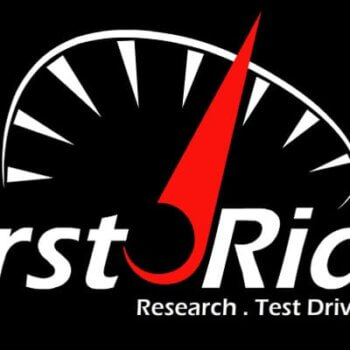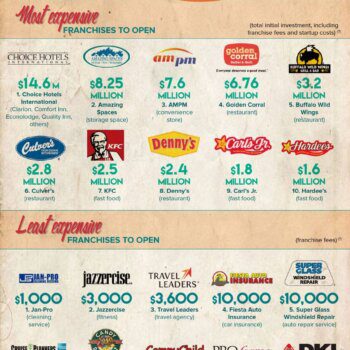According to Stanford research 92% of start-ups fail in the first 3 years. There are literally thousands of great ideas out there, but what separates successful companies is the ability to execute and get traction. Failure is guaranteed without execution.
Try to do everything and you will do everything badly – the key is to focus on one thing, do it well and do it until it’s done. Get this right and the whole team will be focused, working together to carry the load and your company will be on its way to being part of the 8%. Get it wrong and everyone will be spread paper thin, trying to do everything, doing everything badly and be en route to being a statistic.
The key is alignment. By using daily huddles, weekly/monthly problem solving and quarterly planning, high performing startups align what the team is doing (OKRs) day to day and week to week, with a quarterly theme, annual milestones, 3-5 year targets and the critical long-term fundamentals – purpose, BHAG, brand promise and core values.
Aged-care SaaS start-up KareInn (Seedcamp) and urban garden start-up Patch (Forward Partners) are both using these alignment tools to execute voraciously and are ahead of plan to their next financing milestones.
Clarity with a 1-Page Strategic Plan
At Forward Partners, we use a tool called the 1-Page Strategic Plan, developed by author and founder of the Entrepreneurs Organisation – Verne Harnish. The framework and the insights I discuss in this article, are in large part developed by his formidable organisation – Gazelles.
As your team grows from 3 to 10, 10 to 25 and 25 to 200, the organisation goes through cycles of change as you learn to manage communication, planning, execution and productivity.
A 1-Page Strategic Plan literally gets everyone onto the same page and allows you to harness the power of the team. Everyone knows that a 20-page business plan is obsolete the moment it is written. No one reads it and it sits on a file server! A 1-page Strategic Plan is a living document that captures on one-page the entire company’s strategy. In the short term, this captures what the team is doing day-to-day, week-to-week, with the top quarterly priorities (rocks) and a number one priority – the quarterly theme. In the longer term, the plan captures annual milestones, 5 year targets, and the really long-term stuff – purpose (mission), vision, your BHAG, and the stuff that binds you together as a team – core values.
Where to begin?
With venture funded startups, I like to focus the mind by getting clear about the founders’ personal objectives and the implications for a “liquidity event”. Most founders are primarily motivated by the passion to “do something” worthwhile, build and create.
For better or worse, the moment you decide you need to do this with the help of an investors money, rather than boot strap yourself, you become wedded to a second set of objectives. This means making sure you are aligned with your investors about what a successful “exit” looks like.
We do this by defining our 3-5 year targets. Most accept that 7-10 years is more realistic for an exit but 3-5 years focuses the mind.
- What would success look like? What would be your gross revenue? EBIT margins? EV/market cap?
- Where will your company be playing (your sandbox)? Which markets, products, geographies?
- What are the 3-5 major capabilities that you will need to build to get there?
Have you done this explicitly with your investors? Surprisingly few companies do.
What next?
Having worked out where we want to be in 5 years, next we “go long!” – financial goals only go so far. The truth is, great organisations are motivated by things much more fundamental than money. It’s important for you to find your “north star” – purpose, core values, BHAG.
A company’s “purpose” is the distillation of what the company is really about. At its core, when your customer buys your product or service, there is really something much more fundamental that they are trying to achieve. It’s often a basic emotion or need. The objective is to get it down to one word, or at most a short phrase. To get to the root cause of a problem Toyota developed a tool called 5 Whys. It’s hard to do this well and it requires persistence, but an example is to be found here.
At Forward Partners we are “an early stage Venture Capital investor”. Why do we do that? Why is it important? Ask and answer that question five times and generally you get down to “to save the planet!” Back up one level and you will find your purpose. At Forward Partners our purpose is “real prosperity”. We are in the business of helping our portfolio company founders achieve their goals and “real prosperity”. Our portfolio companies are “real” businesses, making a difference and doing worthwhile stuff in the world. “Real prosperity” also applies to the limited partners in our fund (our investors) who in turn are trying to deliver better returns for their pension fund investors, and perhaps in turn your grandmother – “real prosperity”. Finally “real prosperity” also applies to our team who we want to have rewarding careers, develop their skills, do satisfying work to support our portfolio companies and enjoy rewarding compensation. All our team members participate in the carry – “real prosperity”.
Having distilled your purpose, next we look for a BHAG (Big Hairy Audacious Goal) a concept developed by author Jim Collins. There are lots of resources available online to help you better understand the concept, but the objective is to find a measurable goal that really raises your sights. If done well, it might result in a sharp intake of breath and the response “wow, if we really achieved that, that would be mind blowing!” The classic BHAG was Microsoft’s “a PC on every desk” (which for a time they basically achieved!)
Powerful also is brand promise – what are the three fundamental reasons why your customers would choose you over your competitors? We then look for three brand KPIs that measure how effective we are at delivering on those promises. Southwest Airlines is a great case study for a focused brand promise.
Finally we distil our core values. Before you roll your eyes, what we mean by core values in this context is definitely NOT the “motherhood and apple pie” that masquerades as core values at your average big corporate – honesty, integrity and team work. Within the context of the 1-Page Strategic Plan, what we are looking for is truth about the real values that define the organisation. Objectively, they can be “good” or even “bad”. Often we look to the founder for core values. What was their original motivation for starting a business. Secondly we look to high performers in the team – who are those individuals that you wish you could clone? Often a core value lies in their conduct.
Bringing it back to the here and now
Having articulated the long-term vision for the business, it’s time to start bringing it back to the present. I often find myself using the analogy that your company vision (purpose, BHAG, Brand Promise and Core Values) is equivalent to “which mountain the company is going to climb”. The quarterly and annual milestones are like deciding to tackle the summit via “basecamp two and basecamp five”.
So next we determine where the company needs to be in 12 months time? For example, what milestones do we need to deliver to raise our Series A or Series B? We could define this in terms of:
- Users
- Subscriptions
- Unit sales
- Revenue targets and profitability.
We underpin this with 3-5 key initiatives or milestones and 1-2 critical numbers for the team to monitor; ideally one that is people or balance sheet related and a second that is process or P&L related.
Having determined where we need to be in 12 months, we then bring the focus back to the next quarter, more or less looking for a similar set of metrics to deliver in the next 90 days. Here we focus on the top 3-5 priorities or “rocks”. The term is borrowed from a fable about the most important things in life. If you are to fill a bucket with rocks, pebbles and sand, don’t put the sand in first as there will be no room left for the pebbles and rocks. Of the dozens of things that the company needs to do every quarter, the “rocks” are identified as the most important. A company’s rocks might include “launch a new product”, the pebbles are “make payroll” and the sand is “respond to my slack messages”. The analogy is used to focus the mind and carve out time to work “on the business” rather than just “in the business”.
Next we focus the team with a quarterly theme. Ideally this has everyone in the company focus on the most important (number one) of the top five priorities. When this process works really well companies will identify a theme that is humorous, a bit irreverent and fun. At Forward Partners this quarter our theme is “Unleash the Beast” – code for us documenting and clearly articulating the way we help our portfolio companies build their MVP. We have a scoreboard and while there is a core team, everyone in the company is contributing to the process. If we deliver on the theme the company will celebrate by going white water rafting together!
Finally, everyone in the company captures their own individual priorities and KPIs that underpin the company’s quarterly theme and quarterly rocks. At Forward Partners we use Google’s OKRs – objectives and key results.
Maintaining Alignment
The process described above is conducted during a 1-2 day (!!) offsite. The whole team contributes to building the plan. This not only creates buy-in and team alignment, but often generates insights that senior management had not considered.
The key to using a 1-page Strategic Plan is to recognise that it is a process (run quarterly) and not a static output. Each quarter the team comes together and rebuilds the plan from the ground up. In between we take the plan out to the market and test it. Tzun Tzu says “no strategy survives first encounter with the enemy” and the same is true for strategic planning. Each quarter the team brings back learning and insight that helps refine the plan. Next quarter we may still be climbing the same mountain but this time we will “bypass basecamp two and go straight to basecamp three”.
Between quarterly planning sessions, alignment is maintained with Meeting Rhythm. The best teams huddle daily (no more than 15 minutes stand-up), problem solve weekly, assemble to work on strategy monthly and plan quarterly.
Summary
All together this is the process of executing well by maintaining alignment and using a 1-page Strategic Plan – huddle daily, meet weekly/monthly to problem solve and plan quarterly. In your planning, align what the team is doing (OKRs) day to day and week to week, with a quarterly theme, annual milestones, 3-5 year targets and the critical long-term fundamentals – purpose, BHAG, brand promise and core values. Simples.
Finally, a word from one of our highly talented founders at Forward Partners – Freddie Blackett at Patch
“For Patch, the 1PSP has been great because:
- It’s a simple, not-too-scary way for a startup to get down on paper their Strategy 1.0. Tools like the lean canvas are super at first but they can be inferred as static. LC is a portrait of the business’ proposition as it is/wants to be. 1PSP is a portrait of the business, where it is headed and how it’s going to get there, with clear implications for everyone involved.
- Consulting tools can feel a bit daunting and consulting-y but what’s been great for Patch is that the shorthand for our quarterly theme has been deliberately light-hearted and catchy, for example “BIGKEN65” and “Barbara Windsor”. That might sound flippant but actually it’s been really important for it to catch on across the team.
- We had a great facilitator! Like with all things strategic, it’s vital to have someone asking the right questions of you to draw your team out of the day-to-day and into the bigger picture. Unless you have someone experienced in group facilitation, it’s difficult to get that. The obvious risk being that you might end up with the wrong plan.”
__________________________________________________
About the Author
Written by Steven Gledden of the Path Forward. The Path Forward was developed by Forward Partners, a VC platform that invests in the best ideas and brilliant people. Forward Partners devised The Path Forward to help their founders validate their ideas, build a product, achieve traction, hire a team and raise follow on funding all in the space of 12 months. The Path Forward is a fantastic startup framework for you to utilise as an early stage founder or operator.





























